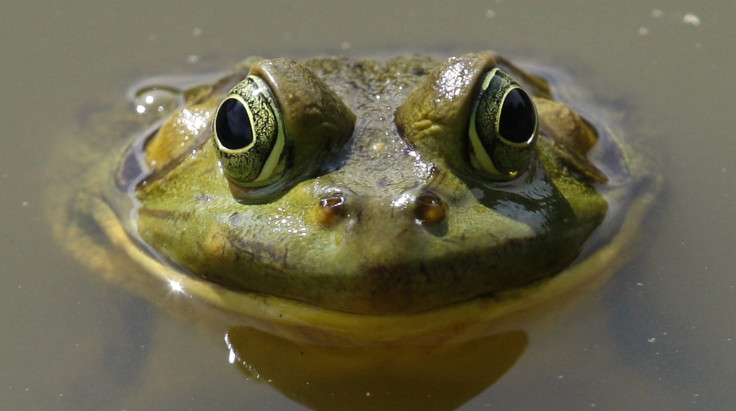Frog Species Are Becoming Extinct At Alarming Rates, New Study Says

Frog species are on the decline, according to a new study in the Proceedings of the National Academy of Science, which estimates that at least 3.1 percent of frog populations have gone extinct since the 1970s and predicts that another 6.9 percent may disappear within the next century.
The study, from Macquarie University in Sydney, found that 200 of the world's 6,355 frog species went extinct between the 1960s and 1990s.
"That's pretty bad, because if you project that forward for the next couple of centuries, you end up with a percentage which would resemble a mass extinction," John Alroy, the study's author and associate professor at the university's biology department, told the Sydney Morning Herald.
Alroy attributed the large losses of species partially to global warming but said that the majority of them had been been lost due to other factors, such as fungus and pollution.
"The losses are coming from the introduction of invasive species, the spread of a fungus called BD (Batrachochytrium dendrobatidis), habitat destruction and, potentially, pollution," he said.
In Papua, New Guinea, the decline in frog species may be due to deforestation, Alroy said. Frogs native to Central America and Brazil are particularly vulnerable. Species saw large losses since the BD fungus threatens populations there.
Madagascar saw 11 percent of frogs become extinct in the 30-year period studied by Alroy's team, but frogs do not seem to be in danger on the African mainland. Frogs were also largely unaffected in areas such as Europe, the United States and Southeast Asia.
But Alroy said that more research needs to be conducted to determine what is threatening the frog population at such alarming rates. He hopes that the report, which will be published Tuesday, will prompt other studies.
“Honest to goodness, I don’t know what’s going on,” Alroy told the Washington Post. “The pattern seems to be that there are more extinctions in the wet tropics, speaking very loosely, which is not too surprising because that’s where all the biodiversity is. But that doesn’t really answer the question of what’s going on.”
© Copyright IBTimes 2024. All rights reserved.






















